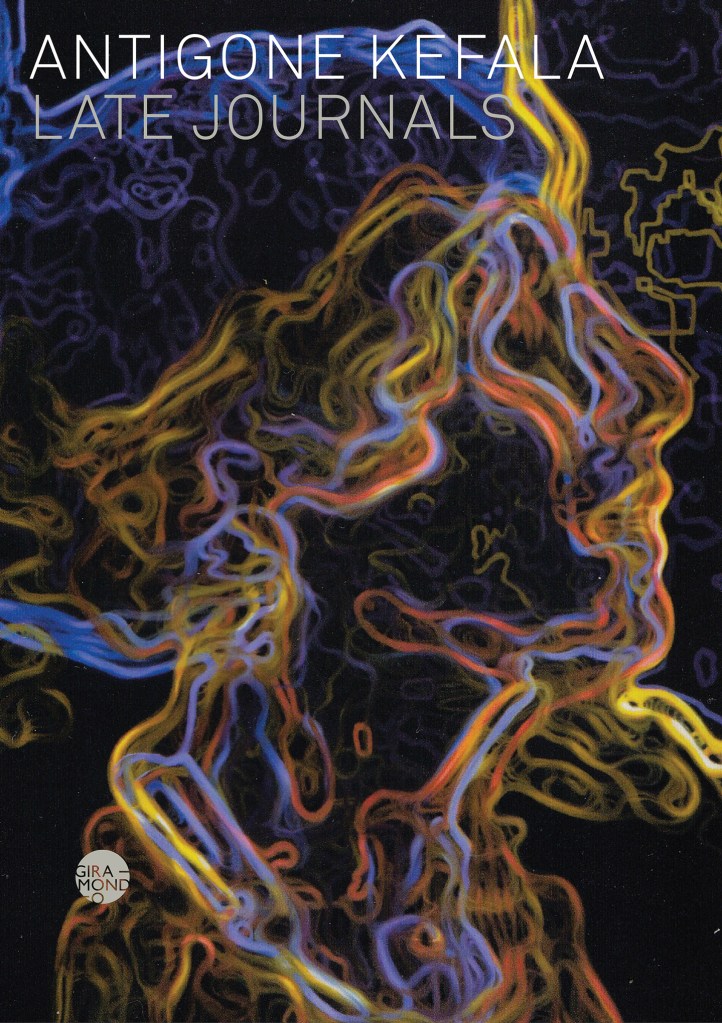Antigone Kefala, Late Journals: Reflections 2000–2020 (Giramondo 2022)
I’ve come late to Antigone Kefala’s work, having previously read only her 2016 book of poetry, Fragments. When I blogged about that book (here), I responded to a comment Kefala had made elsewhere that she was always seen as an ‘ethnic’ writer, ‘constantly being compared to other ethnics, but not to Australian writers’, by comparing one of her poems to one of Les Murray’s. A little later I actually met her at a poetry reading. It felt a little like being presented to royalty, but she was all modest grace, called me ‘Mr Shaw’, and was amused that I had taken her challenge so literally.
Appearing six years after that encounter, Late Journals is full of that same modesty and grace. It’s a collection of fragments from a life, organised into six years divided into months. Given that the book’s subtitle tells us it covers 11 years, it’s evident that the book isn’t literally a diary, and attempts to tie entries down to specific dates will likely as not be thwarted.
For example, I flipped at random to page 62, the end of February of Journal III:
Nikos is having an exhibition in Vienna. He will send a catalogue, I was thinking of the early opening at Barry Stern’s.
In the silence of the gallery his fruit waited against a brooding metaphysical background. These magnificent shapes absolutely as if made of volumes of colour, colour with an amazing solidity, yet light, the two quinces, the cherries, the pears … The most amazing, rich, yet explosive colour.
A beautiful balanced group.
In spite of so many invitations sent out, only friends came. And no sales.
Characteristically, ‘Nikos’ is not further identified. Nor is the Viennese gallery or the date of either exhibition. A quick web search turns up Nikos Kypraios, who had exhibitions in Vienna in 2011 and 2012. His website has a page of paintings of fruit that were ‘made in 2010’. (I found a record of an exhibition at the Barry Stern Galleries in Sydney more in 1985/1986, but that’s probably not the one she means.) What matters isn’t the date and place. This isn’t a newspaper report, it’s a note about a friend’s achievement, and the editorial decision not to include the friend’s full name, here and in many other places, keeps the reader in the listener-in role. We are given a glimpse of how Kefala’s friendship circle, of how she responds to this work, and to its reception.
The warm appreciation of the paintings and the lament for their lack of local success are typical of much of these journals. This is sometimes about contemporary culture in general – as when she goes to see Fellini’s Ginger and Fred, and describes it as ‘baroque, magnificently funny and satirical, a total indictment of television and advertising, this listening to music while talking, the television sets everywhere’. Sometimes it’s specifically about non-Anglo-heritage artists, possibly most explicitly in this, from May in Journal VI:
Looking at the latest Companion to Australian Literature – we appear in a subsection called ETHNIC MINORITY WRITING. After so many years of writing here we are still totally outside the whole scene. Not only Ethnic, but Minority as well – a double blow.
The literary scene, as the sports scene and so on, seems to be dominated by a few names, as if written by adolescents who can only remember one name, more names in a scene impossible to sustain.
But that’s only one aspect of these journals. As Michelle De Kretser says in a back-cover blurb: ‘In poetry as in prose, Kefala has made the fragment her form.’ A single spread may include a character sketch of an unnamed woman (a journalist?), a description of a dance between the cat (Max) and a magpie, a quote from a New York Review of Books article, incisive praise for a new book of poetry, and a cutting comment on astrophysicists and theologians on TV.
From the accumulation of fragments, made readable by the diary-like presentation, there emerges a quiet self-portrait of a creative spirit, part of a creative community, immersed in the world of literature, music, drama, art, doing her bit to make sense of it all. A self portrait of a woman facing the vicissitudes of ageing and mortality. A generous sharing of self from someone who is immensely likeable.
Antigone Kefala was born in Romania in 1935 and after living in Greece and New Zealand migrated to Australia in 1960. Her first collection of poetry in English, The Alien, was published a little over a decade later. She has written three works of fiction, five poetry collections and two collections of journals. This book, which has been ominously described by its publisher as her final work, is the second of the journals.
I am grateful to Giramondo Publishing for my complimentary copy of Late Journals.



I read this one too, but unlike you, I didn’t know her work and I’d certainly never met her.
In the course of writing about this book, I turned up this info:
“In 2021 UWAP published a critical study called Antigone Kefala, New Australian Modernities, edited by Elizabeth McMahon and Brigitta Olubas.” I toyed with buying it, but in the end decided not to because I already have on the TBR too many bios and critical works about writers whose work I do know. Still, I live in hope that my library will get a copy, because I’d like to browse through it, mainly to learn more about the ways in which she is said to have influenced the literary scene.
LikeLiked by 1 person
I’ve just read your review, Lisa – and recommend it to anyone stopping by here. The UWAP book sounds interesting, but like you I won’t rush out to buy it – SMBSLT.
LikeLiked by 1 person